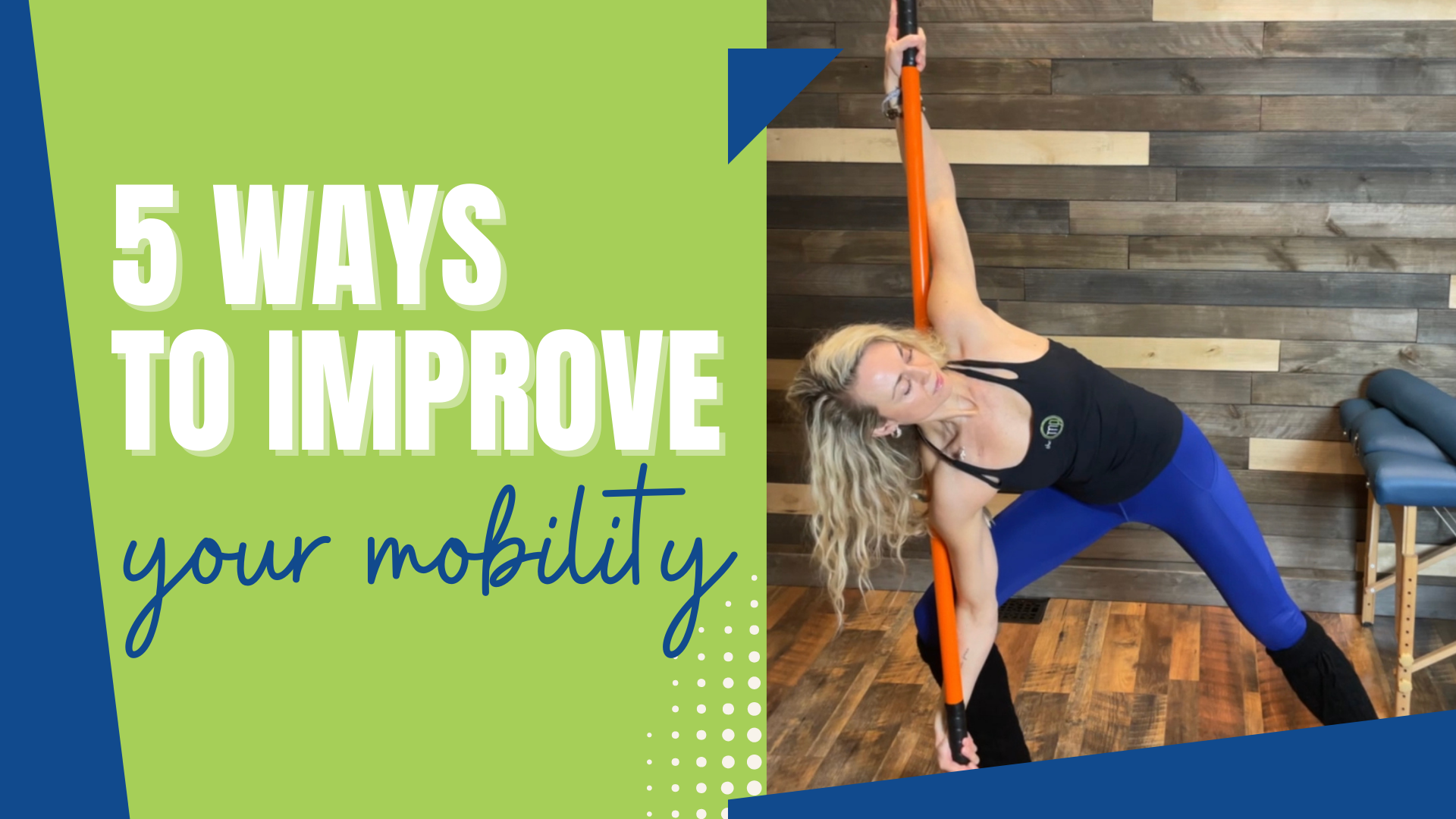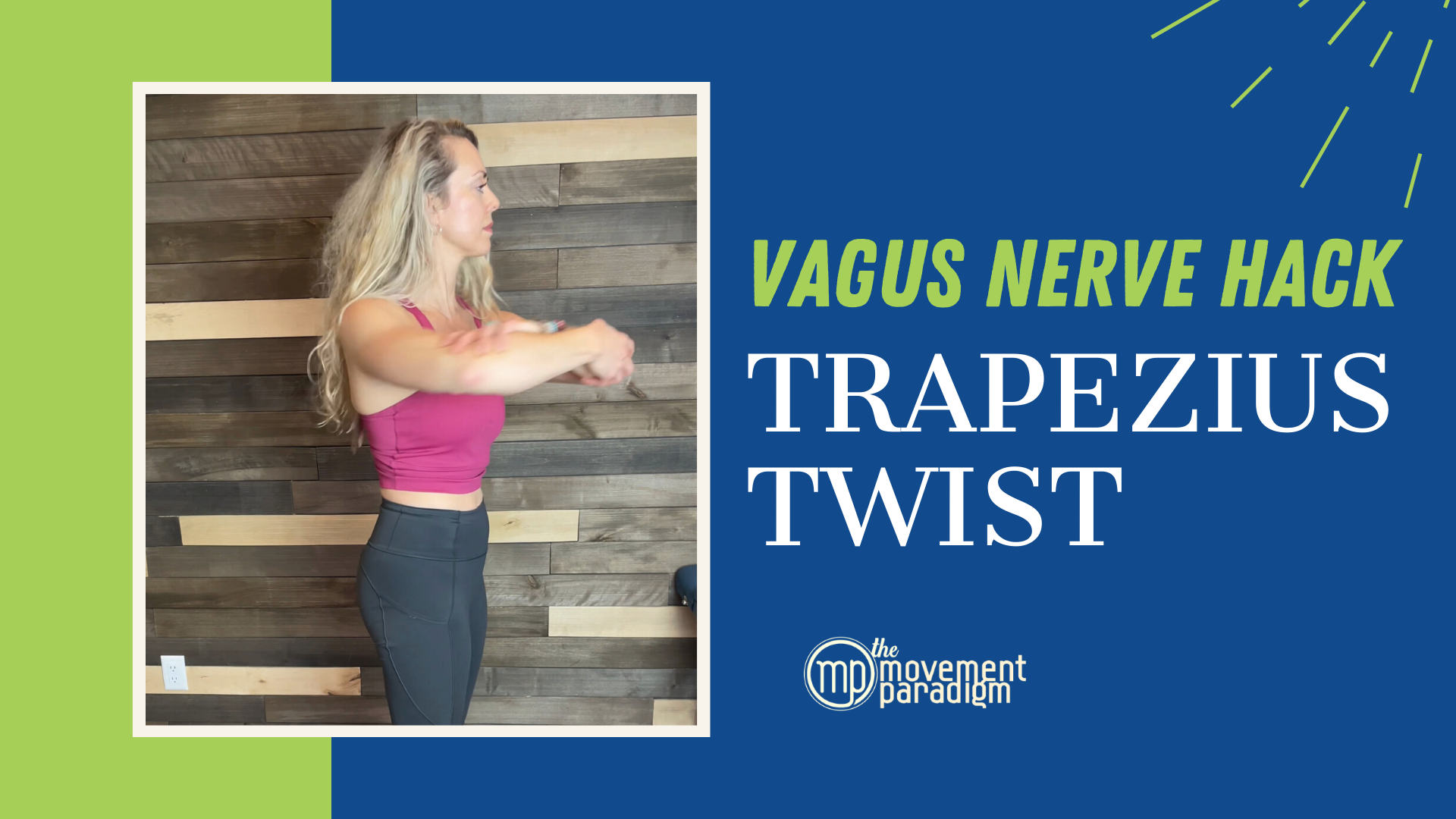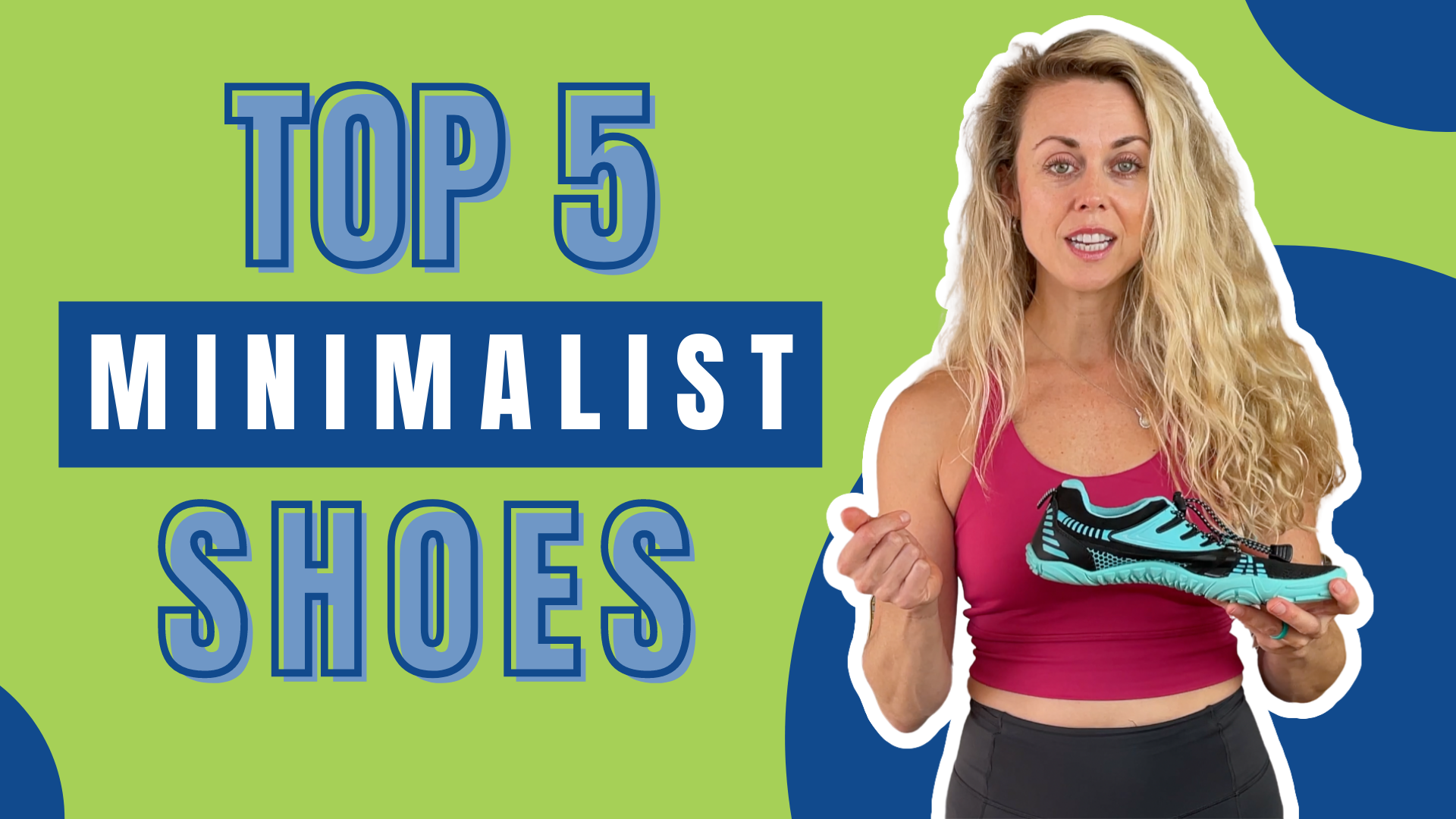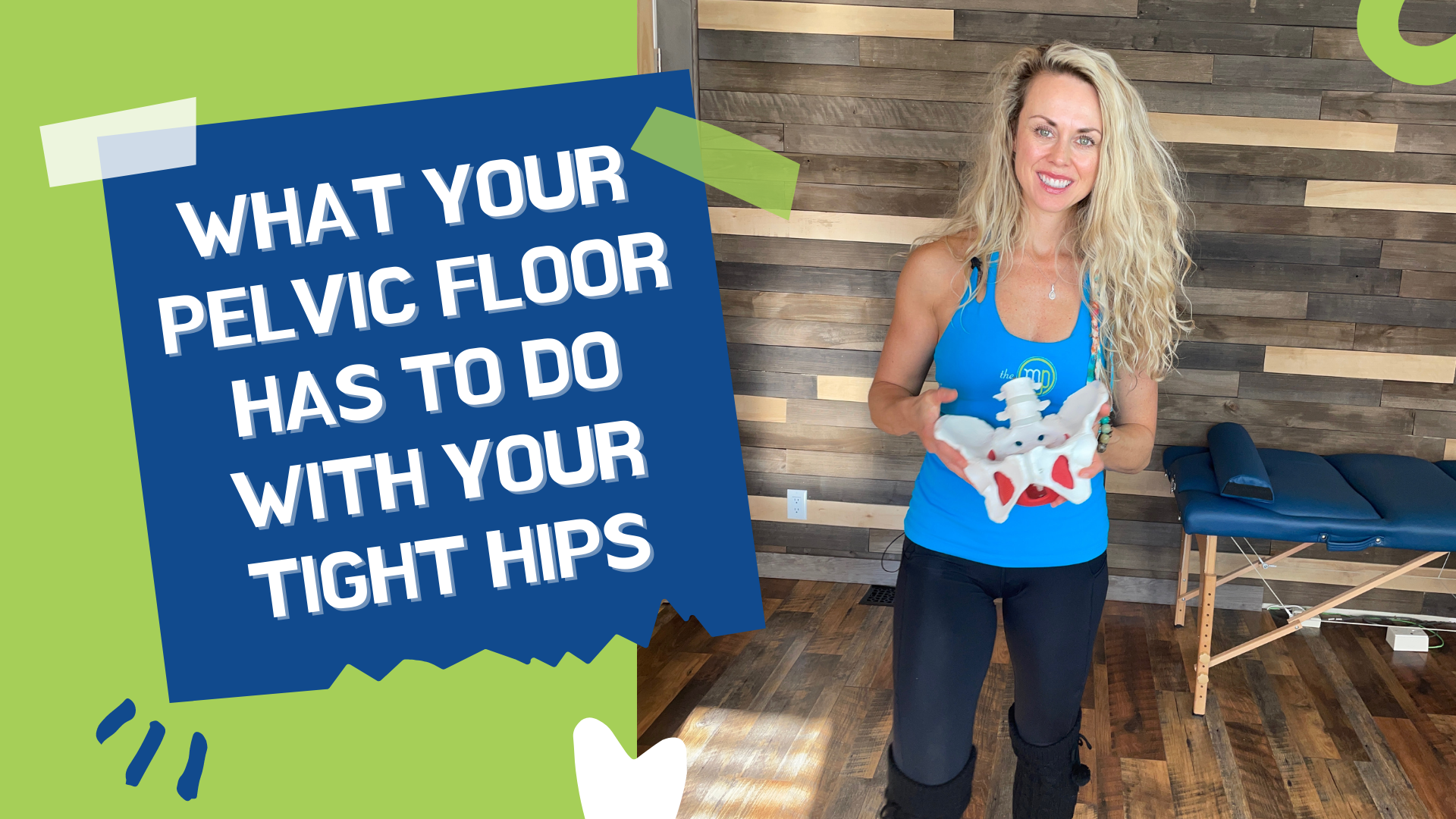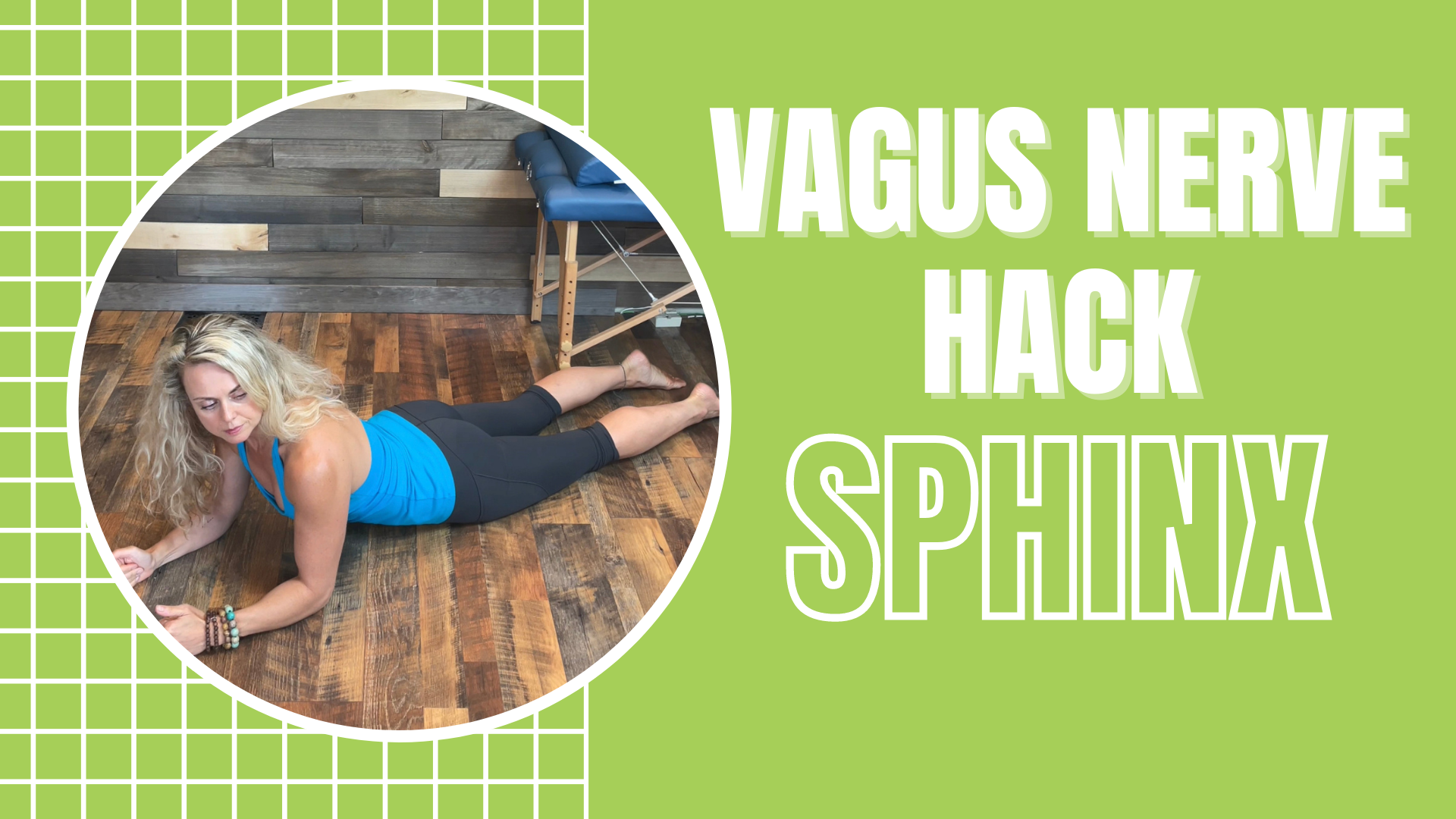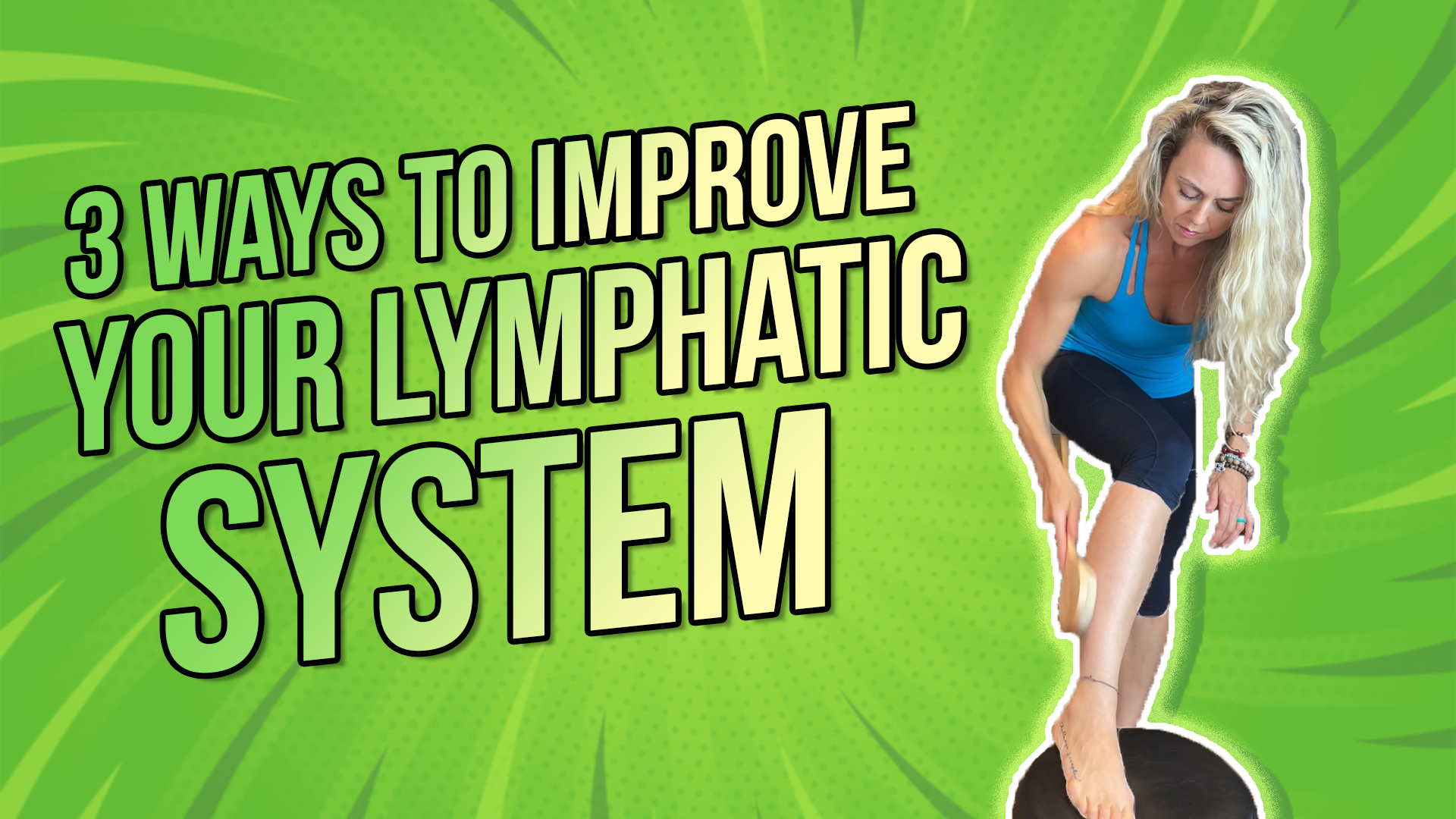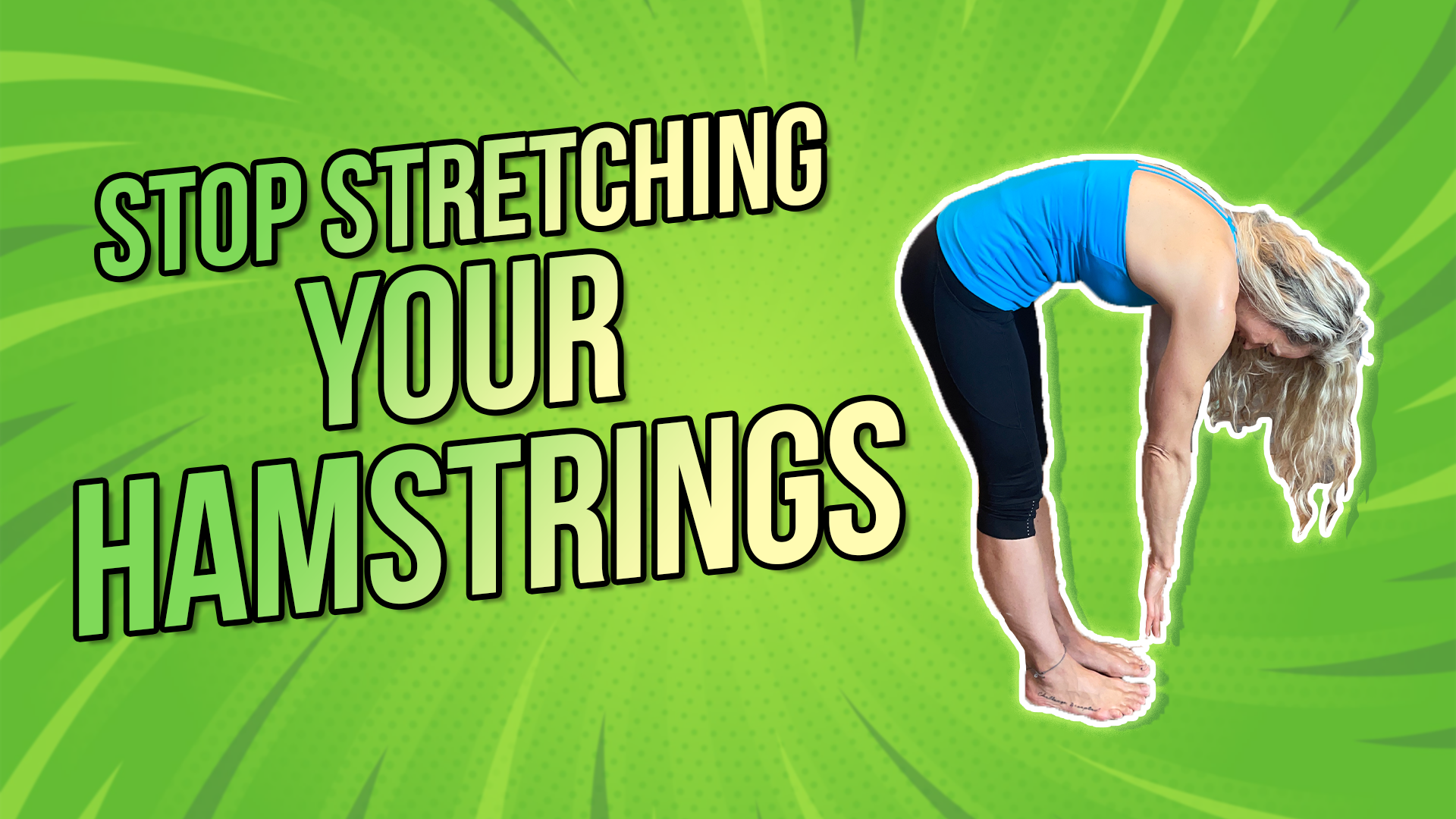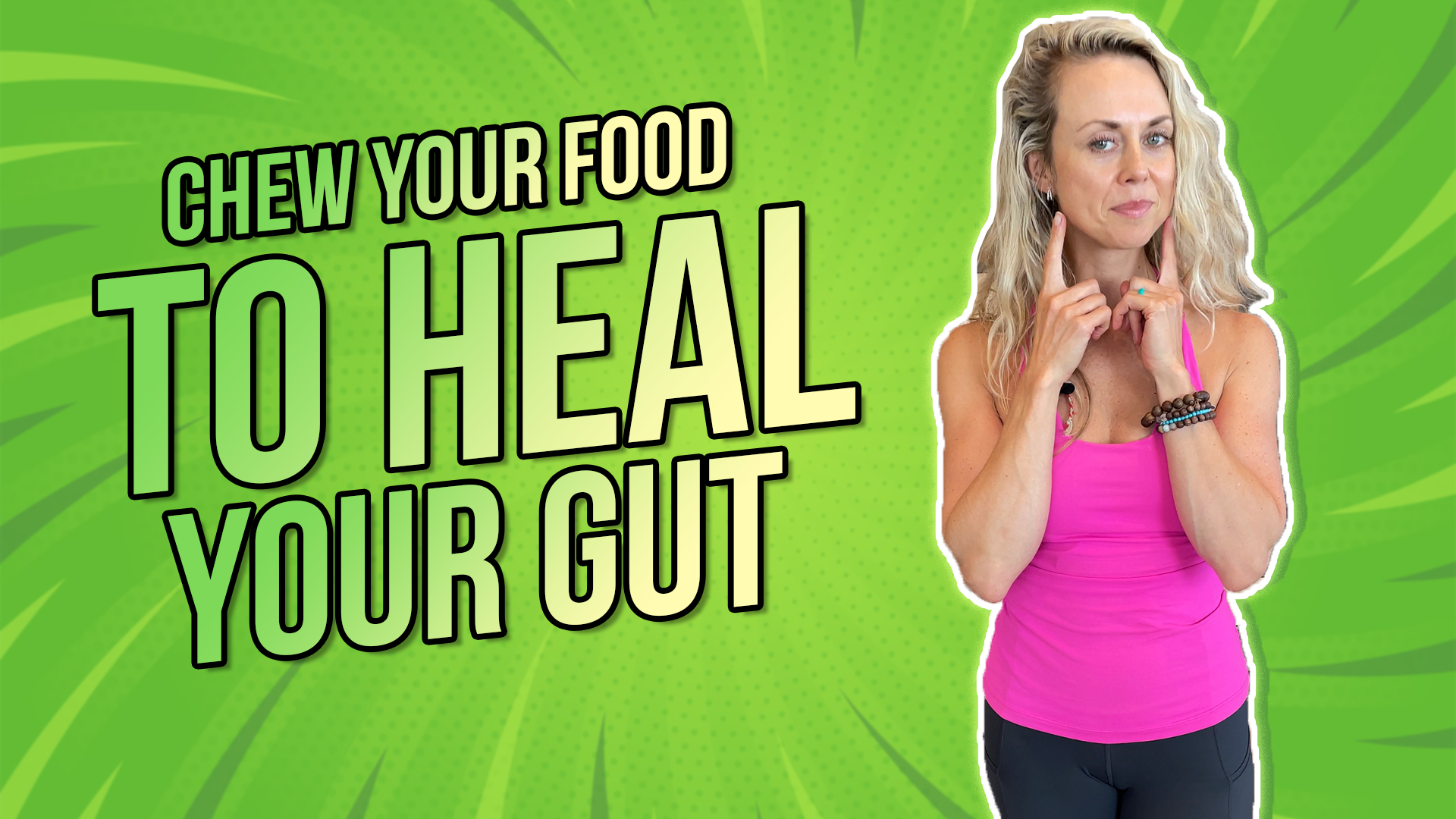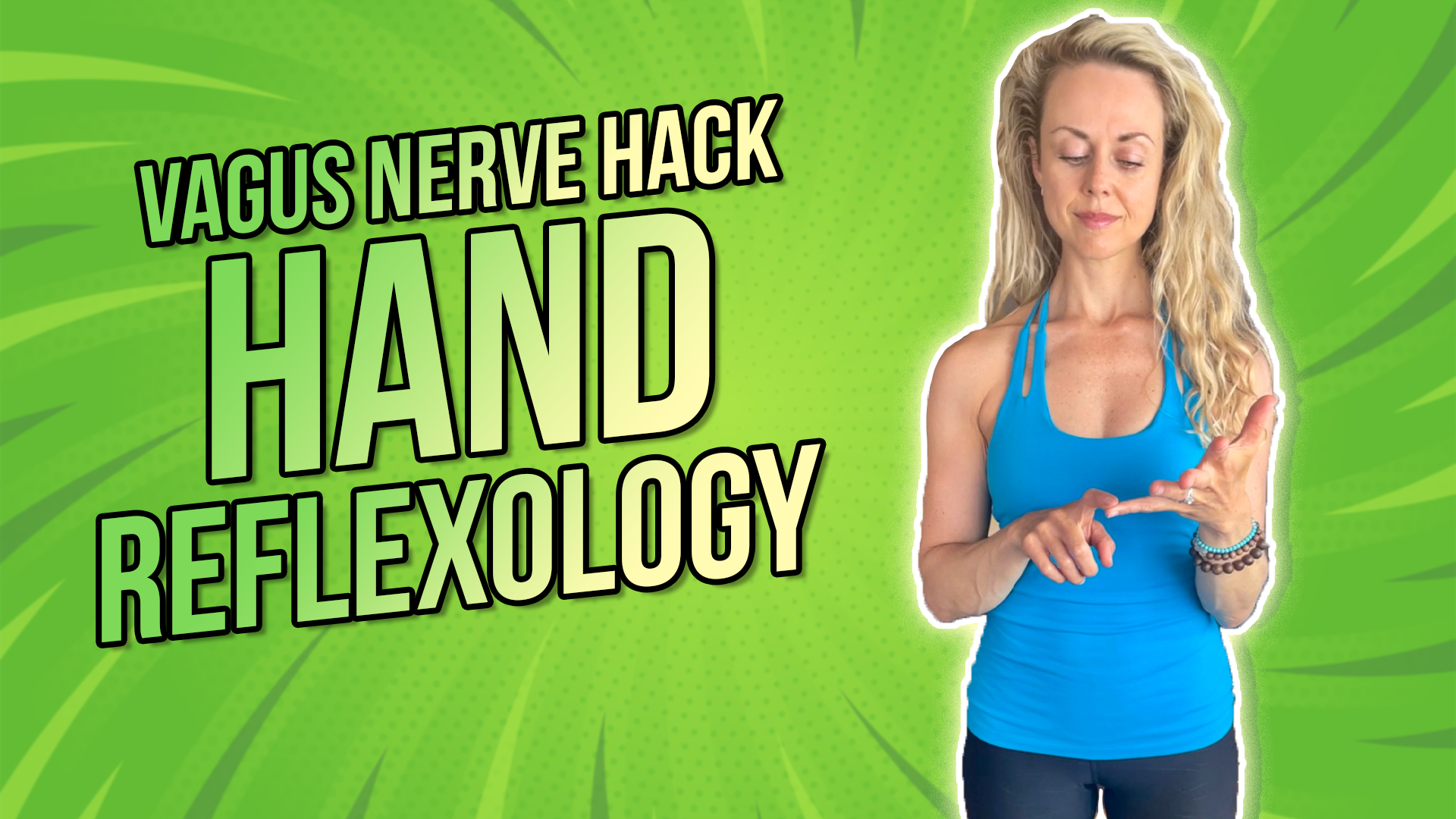Wondering how you can improve your mobility? If you feel tight or restricted in your day-to-day activities or exercise movements, then this is for you. Let’s start by defining mobility.
Mobility is essentially being able to move a body segment in a pain-free, non-restricted range. This is important because we want to not just focus on the muscle and fascia, but also the joint and ligamentous structures. All of these tissues are going to allow for a non-restricted pain-free range of motion.
Please check out my other article on the science of stretching, because today we’re going to focus on five ways that you can improve your mobility.
Rather watch or listen?
1. Own Your Movement
You want to own your movement, not rent it. For example, if I was looking at your shoulder mobility while you bring your arms overhead, your elbows bend or your back starts to arch. This means that you don’t have a full range of shoulder mobility. Rather there are compensations throughout the kinetic chain.
When we’re thinking about mobility, we want to create tension in the body and isolate whatever aspect we’re working on, in this case, let’s say the shoulder. We want to create stability where the body needs stiffness and create mobility where we actually need it.
It is important to make sure that as you’re working on different mobility exercises that you are focusing on the quality of the motion, and the true articular motion of the joint of that particular body segment without any compensation.
2. Load Your Body in a New Range
In order to make gains in our mobility, we have to challenge it in a new range that we don’t necessarily have. Even improving your range of motion by a degree or two is significant because that can change how you move through the world. We can use the example of your ankle.
If we can change your ankle mobility two to three degrees, that’s going to change how you walk, go up and downstairs, squat, run, move, play, and perform any dynamic activity. Those small gains in a new range can make a huge difference.
3. Breathing in That New Position
When you are challenging your body in this new range, your nervous system may feel that it is in a vulnerable position. We have to teach our nervous system how to be safe in this new position.
To do that, we have to breathe optimally to calm the nervous system down and create that parasympathetic response in the new range. This will allow us to communicate to our brain and nervous system to say this is safe.
4. Create Strength in Your New Range
Going back to the shoulder example, if we are trying to create a new range of motion, we can use something like a dowel, a golf club, or a broom to reach overhead to push our shoulder into that new range.
We want to use our breath, core, and total body tension to get our shoulders in that new range when we lift overhead. When you get to the top of the motion, you can press or pull into it to create strength in the new range that you didn’t have before. I like to think of it as you’re creating strength in mobility.
5. Self-Myofascial Release
Self-myofascial release is not breaking up adhesions or getting rid of knots in the muscle. What we are doing is creating a neurophysiological response. We’re creating an inhibition of the tissue to allow for a relaxation of tissue.
We can do this best by using an example such as the pin and hold technique. You can perform this technique with a tennis or lacrosse ball. If you were working on the tissue in your quad, you would place the ball closer to the origin or insertion of the muscle because that’s where we have our GTOs, Golgi tendon organs, which are nerve endings that give our brain feedback. We are creating an inhibition of the tissue to then allow us to move that tissue in a new range.
Unfortunately, we tend to have a lot of movement compensations. That can be from injuries, surgeries, just poor movement in general, or lack of movement. Due to this, our tissue isn’t always as elastic as it should be.
When you think about going into your movement preparation routine before your workout, this is an optimal time to work on things like this. Focus your attention on specific body parts that you need work on.
For example, you might need to work on ankle mobility for a month or two, and then transition to shoulder mobility. If you could do all of it at the same time, awesome, but be realistic and give yourself a little grace to do the best you can.

